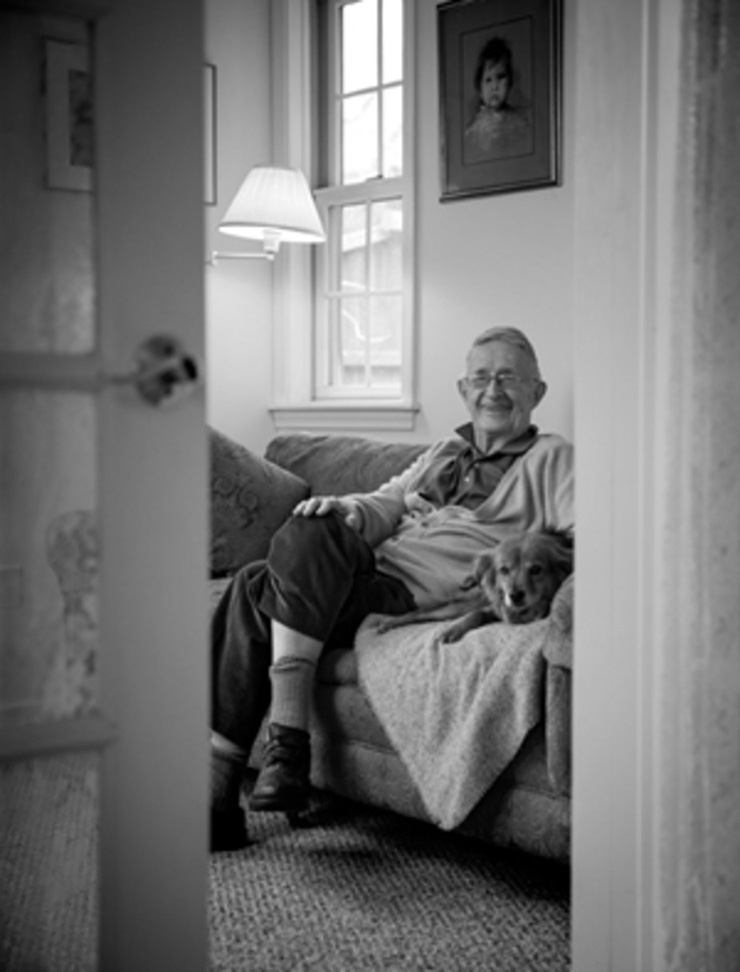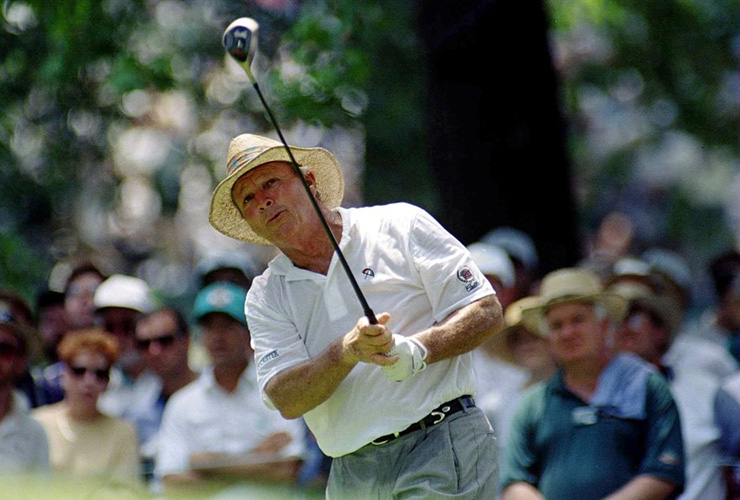By John Feinstein
The late Frank Hannigan would not have enjoyed this past couple of days at Shinnecock Hills. He would have thought the USGA—once his employer—sold far too many tickets. They admitted to 30,000; Hannigan would have said it should be no more than 25,000.
He wouldn’t have liked the temporary locker room built for the players in order to keep the ancient clubhouse available exclusively for Shinnecock members and USGA executive committee members.
He would have been appalled by the nightmare stories about traffic coming in from the west.
And he certainly wouldn’t have liked the abundant sunshine. Years ago, walking around Turnberry on one of those rare beautiful Scottish summer days, I turned to him and said, “This is the kind of day that makes life worth living.”
“Aaah bull—-,” Hannigan replied.
THAT was Hannigan.
He never found a silver lining in any cloud because he didn’t look for one. The darker the cloud, the happier Hannigan was.
He is also the person most responsible for the U.S. Open being at Shinnecock this week.
The way Hannigan told the story, it was Harry Easterly, then his boss at the USGA, who first wondered aloud if it might be possible to take the Open to Shinnecock, which had hosted the second Open in 1896 but had never been seriously considered again as a host because of logistics.

Frank Hannigan in 2014
“Harry Easterly had trouble putting one foot in front of the other, much less getting anything actually done,” Hannigan once said—not an atypical Hannigan comment. “But when he brought up Shinnecock, I thought it was worth finding out if it was possible.”
Hannigan assigned two of his top lieutenants: David Fay and Tony Zirpoli to find out what the challenges would be of going to Shinnecock. One was obvious: Shinnecock was a seasonal club, meaning there wasn’t a 12-month membership or staff to run the event outside the ropes. That had been the Open’s tradition—the USGA ran everything inside the ropes; the host club ran everything else.
Fay reported back that if the USGA wanted to go to Shinnecock, it would have to take over almost all of the championship’s logistics, which would be a major financial gamble.
“My report was 18 pages,” Fay remembered. “The first sentence said, ‘Unless we’re prepared to take over running the Open outside the ropes, there’s no need to read any further.’ ”
Hannigan kept reading. Then he sent Zirpoli to find out where people might be able to park and to negotiate with the Shinnecock Indians, who had a lot of lands that could be used for that purpose.
He also had to negotiate with politicians from Suffolk County to get a temporary bridge built that would allow fans to cross Montauk Highway, the road that runs in front of the club.
Once Zirpoli reported back that he’d convinced the pols to build the bridge—it’s known to this day among longtime USGA employees as “Tony’s Bridge”—Hannigan had to decide whether to recommend to Easterly that the USGA approach Shinnecock about hosting in 1986.
“I decided it was worth trying,” Hannigan said, years later. “It was such a great golf course. We had to be careful though. We had to cap attendance at 25,000 max. And, we had a lot of work to do in-house to put on the championship. We’d never done that before.”
The ’86 Open—won by Raymond Floyd—was a huge success in every possible way. The logistics were difficult but worked. The golf course got rave reviews. And the USGA discovered a new business model that has helped the association become insanely wealthy in the last 30 years.
Shinnecock hosted the Open in 1995 and again in 2004. The only reason for the 14-year gap since then was the Sunday debacle in ‘04 when the USGA allowed the course to get away, taking “firm and fast,” to a level where one of the greatest venues in golf played like a roller-coaster ride.
Now though, Shinnecock and the USGA have already agreed to bring the event back here in 2026.
Hannigan became the USGA’s senior executive director in 1983 and left to go to work for ABC as a rules expert in 1989. In 1995, he returned to Shinnecock—after ABC had lost the Open TV rights to NBC—as a guest of Fay, his successor.
“This was the best thing I did at the USGA,” Hannigan said, walking around the golf course the first day he arrived. “You would have thought that they’d have made me an honorary member by now.”
Hannigan would never have fit in at Shinnecock—or any other big money club. He was a believer that anyone on a pedestal—ANYONE—should be a target.
Even Arnold Palmer.
In 1994, the USGA awarded Palmer a special exemption to play in the Open at Oakmont. It made sense. Palmer, who had grown up in nearby Latrobe, played his first Open in 1953 as an amateur. He lost a dramatic playoff there to a 22-year-old Jack Nicklaus in 1962 and had his last real chance to win an Open there in 1973 before Johnny Miller blew past everyone with his final round 63.

J.D. Cuban
Hannigan thought giving Palmer an exemption was outrageous and said so in a Golf Digest column, saying that Palmer, at 64, had no chance to compete and was taking a spot away from someone who might have a chance to at least make the cut.
Palmer shot 77-81, but his final round was one of the most emotional and dramatic anyone there had ever witnessed. He broke down in the media tent trying to explain how lucky he felt to have played the game for so long and got a standing ovation from everyone in the room—all of them breaking the ‘no cheering in the press box,’ rule with no regrets.
As I walked out of the room, I ran into Hannigan, standing in the back.
“Still think he shouldn’t have gotten an exemption?” I asked.
“He missed the cut by 11 shots!” Hannigan roared. “Of course he shouldn’t have gotten an exemption.”
I was fortunate enough to be on a short list of people Hannigan considered worthy of his wisdom. Unsolicited, I received constant critiques of my work—and others. They were funny, profane and unflinching.
“You did well … ” he would start an e-mail. And then go on from there to tell me 100 things I could do better.
One of his other proteges was Mark Loomis, who is now the executive producer of Fox’s U.S. Open coverage. Hannigan first knew Loomis as a young ABC producer and decided he was good enough to merit receiving his e-mail critiques.
Loomis still has the last e-mail Hannigan sent him shortly before he died in 2014. He had just been named Fox’s No. 1 golf producer after the network acquired the Open rights beginning in 2015.
“If you regard yourself as a ‘partner,’ of the USGA, you will blow your chance to go down in sports history as anything other than a producer with exceptional organizational and personal skills,” Hannigan wrote.
In other words: Tell it like it is, not as the USGA—or anyone else—wants you to tell it. Loomis keeps a print out of the e-mail above his desk.
He will no doubt think about Hannigan this week, remembering that the Open is here in large part because of Hannigan’s guts and chutzpah. I’ll think about him too, especially when the sun is shining.
Frank was right, though, about one thing for sure: Shinnecock should have made him an honorary member long ago.









